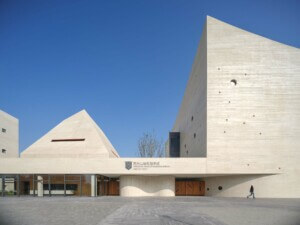As promised, China has completed the first of two emergency hospitals it is building to address the spread of coronavirus in Wuhan, and it did so in less than 10 days. A second hospital is scheduled for completion on Wednesday, less than two weeks after construction began.
The Huoshenshan (Fire God Mountain) Hospital on the outskirts of Wuhan City was delivered to the People’s Liberation Army on February 2 and reportedly began receiving patients on February 3, starting with a group of 50.
The 269,000-square-foot facility has 1,000 beds and was built to serve exclusively as a treatment and quarantine center for patients with the 2019-nCoV virus that has much of the country on lockdown.
Images on China Global Television Network (CGTN), a government-run media agency, show a two-story facility with a series of wards connected by long corridors. There are two beds to a room, and the rooms are equipped with start of the art medical equipment such as a through-the-wall ultraviolet disinfectant system that the staff uses to deliver food and other supplies to patients.
The government has been live-streaming footage of the construction to show how it is responding to the outbreak. Officials say they were able to build the hospital so quickly because they used prefabricated modules that could be assembled on-site, and people worked around the clock in shifts to assemble the components.
A second facility known as the Leishenshan (Thunder God Mountain) Hospital, with 1,600 beds, is nearing completion and scheduled to open Wednesday in a different section of Wuhan, 15 miles from the first hospital. Government officials initially said it would have 1,300 beds but increased the number to 1,600 while the building was under construction. Wuhan, the capital of Hubei, is the epicenter of the virus. City officials took the lead on building the structure, working with the country’s health ministry and others.
The construction process for both facilities is modeled after the one used to build the Xiaotangshan Hospital, which China built in 2003 to treat patients during an outbreak of severe acute respiratory syndrome (SARS) and is still in operation. More than 7,000 people from around the country reportedly came together to build Huoshenshan Hospital. Construction workers were reportedly paid three times their usual salary. The hospital has a 1,400-member staff drawn from the country’s armed forces, including the People’s Liberation Army Joint Logistic Support Force and medical universities run by the army, navy and air force.
The need for the two hospitals has been demonstrated by the way the virus has spread just since construction started. When sitework began for the first hospital on January 23, the death toll in China was 26 with 830 people diagnosed with the virus. By the time the first hospital was delivered, mainland China had reported more than 360 deaths due to the virus and over 9,700 people infected. Wuhan’s cases of infection had risen from 495 to 4,109 during the same period. Worldwide, more than 17,000 cases have been reported on four continents.
The United States has had 11 cases of novel coronavirus as of February 3. On Friday, the U. S. government declared the virus a public health emergency and suspended entry for most foreign nationals who visited China. The World Health Organization has also declared the coronavirus outbreak a global health emergency but leaders have praised China for its response to the virus. “We would have seen many more cases outside China by now, and probably deaths, if it were not for the government’s efforts and the progress they have made to protect their own people and the people of the world,” said WHO director-general Tedros Adhanom Ghebreyesus.
“China’s response has been really remarkable and, quitely frankly, unprecedented,” Dr. Carlos Del Rio, professor of medicine and global health at Emory University, told CNN. “They have learned a lot from SARS and I think they are applying those lessons in controlling this outbreak.”











